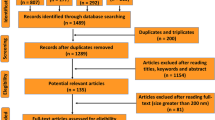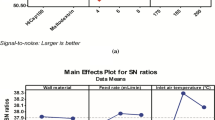Abstract
Curcumin, bioactive from turmeric Curcuma longa, has been known for its therapeutic properties. However, its lipophilic nature and poor bioavailability are the constraints to harnessing its properties. Encapsulation in nano-size helps to alleviate the constraints and enhance its biological properties due to its higher surface area. The study aims to encapsulate curcumin in a nanometer size range by solubilizing in lipid (milk fat) and using milk protein as a water-soluble carrier. The lipid:curcumin ratio (1:0.05, 1:0.1, 1:0.2, 1.5:0.1, 1.5:0.2, 2.0:0.1 and 2:0.2% (w/w)) produced nanoemulsion with droplets sizes 30–200 nm. The sample containing lipid: curcumin, as 1.0:0.05 resulted in an encapsulation efficiency of 92.6%, and its binding interaction with the carrier, was KD = 4.7 µM. A high solubility of curcumin in milk fat and digestion during in vitro lipolysis increased its bioaccessibility. A simulated gastro-intestinal in vitro studies showed that cumulative release percentage of nanoencapsulated curcumin was 60% at pH 7.4 compared to 0.8% of native curcumin. The anti-microbial property of nanoencapsulated curcumin was more potent than native curcumin against food pathogenic organisms such as S. aureus, B. cereus, E. coli, B. subtilis, P. aeruginosa, P. aeruginosa, C. violaceum.





Similar content being viewed by others
Data availability
The datasets used and/or analysed during the current study are available from the corresponding author on reasonable request.
Abbreviations
- GRAS:
-
Generally regarded as safe
- SCT:
-
Short-chain triglycerides
- MCT:
-
Medium-chain triglycerides
- LCT:
-
Long-chain triglycerides
- NCP:
-
Nanoencapsulated curcumin powder
- NaCas:
-
Sodium caseinate
- BCA:
-
Bicinchoninic acid
- EE:
-
Encapsulation efficiency
- g:
-
Gram
- PBS:
-
Phosphate-buffered saline
- ABTS:
-
2,2’-Azino-bis(3-ethylbenzothiazoline-6- sulphonic acid)
- CFU:
-
Colony forming units
- SEM:
-
Scanning electron microscopy
- FTIR:
-
Fourier transform infrared
- MST:
-
Microscale thrmophoresis
- UV:
-
Ultra violet
- Vis:
-
Visible
References
Ahmed K, Li Y, McClements DJ, Xiao H (2012) Nanoemulsion- and emulsion-based delivery systems for curcumin: encapsulation and release properties. Food Chem 132:799–807
Barreto PLM, Pires ATN, Soldi V (2003) Thermal degradation of edible films based on milk proteins and gelatin in inert atmosphere. Polym Degrad Stab 79:147–152
Bhawana D, Kumar Basniwal R, Singh Buttar H, Jain VK, Jain N (2011) Curcumin nanoparticles: preparation, characterization, and antimicrobial study. J Agric Food Chem 59:2056–2061
Bucurescu A, Blaga AC, Estevinho BN, Rocha F (2018) Microencapsulation of curcumin by a spray-drying technique using gum arabic as encapsulating agent and release studies. Food Bioprocess Technol 11:1795
Deck LM, Hunsaker LA, Vander Jagt TA, Whalen LJ, Royer RE, Vander Jagt DL (2018) Activation of anti-oxidant Nrf2 signaling by enone analogues of curcumin. Eur J Med Chem 143:854–865
Fuchs M, Turchiuli C, Bohin M, Cuvelier ME, Ordonnaud C, Peyrat-Maillard MN, Dumoulin E (2006) Encapsulation of oil in powder using spray drying and fluidised bed agglomeration. J Food Eng 75:27–35
Gul P, Bakht J (2015) Antimicrobial activity of turmeric extract and its potential use in food industry. J Food Sci Technol 52:2272–2279
Jiang T, Charcosset C (2022) Encapsulation of curcumin within oil-in-water emulsions prepared by premix membrane emulsification: Impact of droplet size and carrier oil type on physicochemical stability and in vitro bioaccessibility. Food Chem 375:131825
Kabalnov AS, Shchukin ED (1992) Ostwald ripening theory: applications to fluorocarbon emulsion stability. Adv Colloid Interface Sci 38:69–97
Kolev TM, Velcheva EA, Stamboliyska BA, Spiteller M (2005) DFT and experimental studies of the structure and vibrational spectra of curcumin. Int J Quantum Chem 102:1069
Kumar DD, Mann B, Pothuraju R, Sharma R, Bajaj R, Minaxi, (2016) Formulation and characterization of nanoencapsulated curcumin using sodium caseinate and its incorporation in ice cream. Food Funct 7:417–424
Lee SH, Lefèvre T, Subirade M, Paquin P (2007) Changes and roles of secondary structures of whey protein for the formation of protein membrane at soy oil/water interface under high-pressure homogenization. J Agric Food Chem 55:10924–10931
Mangolim CS, Moriwaki C, Nogueira AC, Sato F, Baesso ML, Neto AM, Matioli G (2014) Curcumin–β-cyclodextrin inclusion complex: Stability, solubility, characterisation by FT-IR, FT-Raman, X-ray diffraction and photoacoustic spectroscopy, and food application. Food Chem 153:361–370
Method 18, 4th ed (1997) , Official analytical methods of the American Spice Trade Association (ASTA). New Jersey-07632, Englewood Cliffs.
Nagaraju PG, Sindhu P, Dubey T, Chinnathambi S, Poornima Priyadarshini CG, Rao PJ (2021) Influence of sodium caseinate, maltodextrin, pectin and their Maillard conjugate on the stability, in vitro release, anti-oxidant property and cell viability of eugenol-olive oil nanoemulsions. Int J Biol Macromol 183:158–170
Faldt P, Bergenstahl B (1995) Fat encapsulation in spray-dried food powders. J Am Oil Chem Soc 72:171–176
Pandey S, Vindya HA, Kumar A, Rao PJ (2022) Curcumin loaded core-shell biopolymers colloid and its incorporation in Indian Basmati rice: an enhanced stability, anti-oxidant activity and sensory attributes of fortified rice. Food Chem 387:132860
Paula VS, Ana CP, Lívia ND, Ana Paula Dias Ribeiro MCA and EG de OM (2018) Curcumin-mediated anti-microbial photodynamic therapy against Candida dubliniensis biofilms. Lasers Med Sci 33:709–717
Peng S, Zhou L, Cai Q, Zou L, Liu C, Liu W, McClements DJ (2020) Utilization of biopolymers to stabilize curcumin nanoparticles prepared by the pH-shift method: caseinate, whey protein, soy protein and gum Arabic. Food Hydrocoll 107:105963
Rao PJ, Khanum H (2016) A green chemistry approach for nanoencapsulation of bioactive compound - Curcumin. LWT - Food Sci Technol 65:695–702
Shankar Patel S, Pushpadass HA, Eljeeva Emerald Franklin M, Nath Battula S, Vellingiri P (2022) Microencapsulation of curcumin by spray drying: Characterization and fortification of milk. J Food Sci Technol 59:48
Sheikhzadeh S, Alizadeh M, Rezazad M, Hamishehkar H (2016) Application of response surface methodology and spectroscopic approach for investigating of curcumin nanoencapsulation using natural biopolymers and nonionic surfactant. J Food Sci Tech 53:3904–3915
Sneharani AH, Karakkat JV, Singh SA, Rao AGA (2010) Interaction of curcumin with ß-lactoglobulin;stability, spectroscopic analysis, and molecular modeling of the complex. J Agric Food Chem 58:11130–11139
Sun J, Zhao Y, Hu J (2013) Curcumin inhibits imiquimod-induced psoriasis-like inflammation by inhibiting IL-1beta and IL-6 production in mice. PLoS One 8:e67078
Surassmo S, Min SG, Bejrapha P, Choi MJ (2010) Effects of surfactants on the physical properties of capsicum oleoresin-loaded nanocapsules formulated through the emulsion–diffusion method. Food Res Int 43:8–17
MaH SWK (1996) Infrared absorption methods for examining protein struture. In: Havel HA (ed) Spectroscopic methods for determining protein structure in solution. VCH Publisher Inc
Vegarud GE, Langsrud T, Svenning C (2000) Mineral-binding milk proteins and peptides; occurrence, biochemical and technological characteristics. Brit J Nutr 84:S91-98
Velokov KP, Pelan E (2008) Colloidal delivery systems for micronutrients and nutraceuticals. Soft Matter 4:1964–1980
Walstra P, Walstra P, Wouters JTM, Geurts TJ (2005) Dairy science and technology. CRC Press
Acknowledgements
The authors are grateful to Director, CSIR-CFTRI, Mysuru, for his permission to accomplish and publish this work. The authors are also thankful to the Head & staff, PPS&FT, CSIR-CFTRI, Mysuru, and CIFS facility at CFTRI, Mysuru for their support. The financial assistance for the research work from the Science & Engineering Research Board (SERB-DST), the Government of India, New Delhi (EMR/2016/005112) is appreciated. PJR is thankful to Saji, Nanotemper Technologies for performing MST studies.
Funding
Science & Engineering Research Board (SERB-DST), Government of India, New Delhi (EMR/2016/005112).
Author information
Authors and Affiliations
Contributions
PJR- C'onceptualization, methodology, writing- reviewing, editing and revision, HK- Analysis, PSM- Microbiological studies, data curation, SSV, MSN- Experimentation work.
Corresponding author
Ethics declarations
Conflict of interest
Authors declare no competing interest.
Ethical approval
The research work of this manuscript does not involve animal related studies. Therefore, approval of animal ethics committee is not required. Moreover, the authors have complied with ‘‘work ethics’’ during the manuscript preparation and submission.
Consent to participate
PJR consents to participate in case of request.
Consent for publication
The manuscript submission to Journal of Food Science and Technology (JFST) publication has been approved by all authors.
Additional information
Publisher's Note
Springer Nature remains neutral with regard to jurisdictional claims in published maps and institutional affiliations.
Supplementary Information
Below is the link to the electronic supplementary material.
Rights and permissions
Springer Nature or its licensor (e.g. a society or other partner) holds exclusive rights to this article under a publishing agreement with the author(s) or other rightsholder(s); author self-archiving of the accepted manuscript version of this article is solely governed by the terms of such publishing agreement and applicable law.
About this article
Cite this article
Rao, P.J., Khanum, H., Murthy, P.S. et al. Influence of milk fat on the physicochemical property of nanoencapsulated curcumin and enhancement of its biological properties thereof. J Food Sci Technol 60, 1376–1388 (2023). https://doi.org/10.1007/s13197-023-05684-5
Revised:
Accepted:
Published:
Issue Date:
DOI: https://doi.org/10.1007/s13197-023-05684-5




